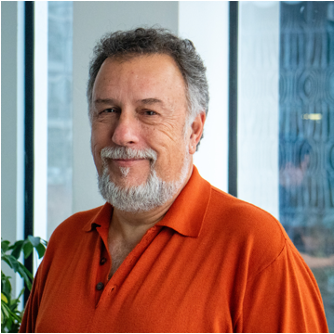IEEE Tech Talk: Getting Started with Systems Engineering and Requirements Management
In today's engineering environment the need for requirements and requirements management is a given. Any industry can benefit from the use of Systems Engineering. Good requirements help keep projects on track, ensure the needs of the customer/user are met, and provide a baseline for the V&V team. A good process and tool can prevent scope creep as changes are managed and traced. This talk will describe best practices in getting started with requirements management tools. While many tools are introduced as silver bullets, the reality is that the introduction of a process and tool takes time and effort to learn and impacts processes. Schedules will likely expand and not compress on the first project to use a tool. I'll walk through an example of how introducing SE can help a company focus on results and create an efficient process to document projects and build the required deliverables.
Date and Time
Location
Hosts
Registration
-
 Add Event to Calendar
Add Event to Calendar
Loading virtual attendance info...
- Seattle University
- 824 12th Ave, Seattle, WA 98122
- Seattle, Washington
- United States 98122
- Building: Admissions and Alumni Building,
- Room Number: Room # Stuart T. Rolfe Community Room
- Contact Event Hosts
- Co-sponsored by Seattle University Student Chapter
Speakers
Paul Kostek
Getting Started with Systems Engineering and Requirements Management
Abstract:
In today's engineering environment the need for requirements and requirements management is a given. Any industry can benefit from the use of Systems Engineering. Good requirements help keep projects on track, ensure the needs of the customer/user are met, and provide a baseline for the V&V team. A good process and tool can prevent scope creep as changes are managed and traced. This talk will describe best practices in getting started with requirements management tools. While many tools are introduced as silver bullets, the reality is that the introduction of a process and tool takes time and effort to learn and impacts processes. Schedules will likely expand and not compress on the first project to use a tool. I'll walk through an example of how introducing SE can help a company focus on results and create an efficient process to document projects and build the required deliverables.
Biography:
Speaker: Paul J Kostek
Paul J Kostek is a Systems Engineer with Air Direct Solutions LLC, a consulting firm in Seattle, Washington. He works with companies in the aerospace, defense, medical device/healthcare, commercial space, and ground transportation industries. Paul is experienced in requirements development/management, architecture, risk management, interface definition, verification, MBSE, and project planning. This includes defining user needs, system/subsystem requirements, system architecture, risk assessments, interface control documents, and verification and validation planning.
Paul chaired the Seattle Section in 1990, was NW Area Chair in 1994, and Region 6 PACE Chair 1995-1997.
In 1999, Paul was the President of IEEE-USA and a member of the IEEE Board of Directors. He served as President of the IEEE Aerospace & Electronics Systems Society in 2000-2001. He was a candidate for IEEE President-Elect in 2001. He Chaired the American Association of Engineering Societies in 2003. And served as VP of Conferences for the IEEE Intelligent Transportation Systems Society
Paul was the IEEE-USA VP of Communications & Public Awareness. He was on the IEEE-USA Board of Directors in 2007-2009. He also has served as chair of the IEEE Individual Benefits and Services Committee, served on the Humanitarian Activities Committee and founded the Avionics Systems Panel for the Aerospace and Electronics Systems Society.
He was General Chair of the 2004 IEEE Intelligent Transportation Systems Conference, Chaired the 2006 IEEE/AIAA Digital Avionics Systems Conference. He was the Chair of the 2011 and 2012 IEEE Global Humanitarian Technology Conference.
Paul supports the IEEE Visibility activities with interviews and articles on aerospace, commercial space, UAVs, and medical devices/healthcare for IEEE and other general news publications.
Paul is a Life Senior Member of the IEEE, an Associate Fellow of the American Institute of Aeronautics and Astronautics, and a Senior Member of the International Council on Systems Engineering. He received his BS from the University of Massachusetts, Dartmouth.
Agenda
5.30 PM to 6.00 PM Networking and Dinner
6.00 PM to 6.50 PM Techtalk



